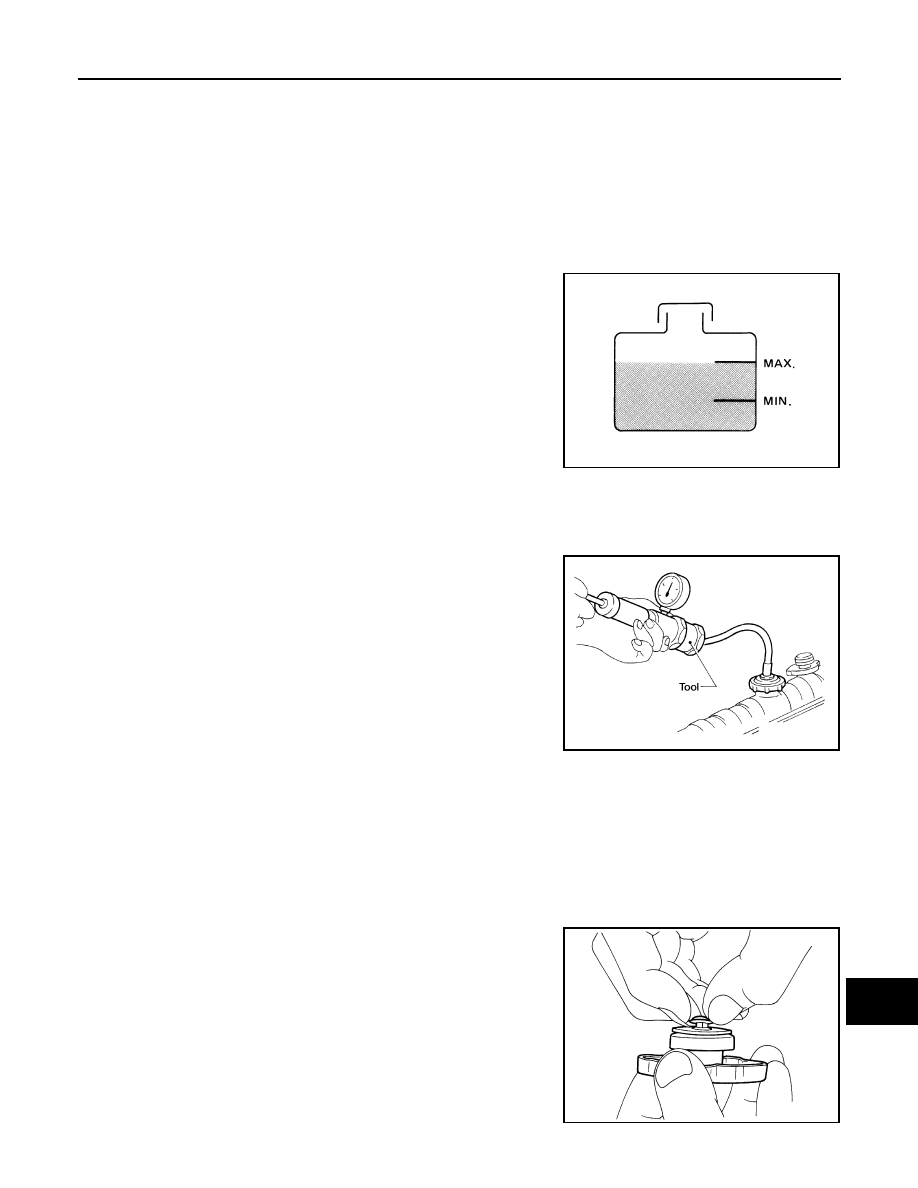Nissan Frontier D40. Manual - part 838

ENGINE MAINTENANCE (VQ40DE)
MA-33
< ON-VEHICLE MAINTENANCE >
C
D
E
F
G
H
I
J
K
L
M
B
MA
N
O
A
CHECKING COOLING SYSTEM HOSES
Check hoses for the following:
• Improper attachment
• Leaks
• Cracks
• Damage
• Loose connections
• Chafing
• Deterioration
CHECKING RESERVOIR LEVEL
• Check if the engine coolant reservoir tank level is within MIN to
MAX when the engine is cool.
• Adjust engine coolant level as necessary.
CHECKING COOLING SYSTEM FOR LEAKS
WARNING:
Never remove the radiator/reservoir cap when the engine is hot. Serious burns could occur from high
pressure coolant escaping from the radiator or reservoir.
To check for leakage, apply pressure to the cooling system using
Tool.
CAUTION:
Higher pressure than specified may cause radiator damage.
NOTE:
In case that engine coolant decreases, replenish cooling system with
engine coolant.
If any concerns are found, repair or replace damaged parts.
CHECKING RESERVOIR CAP
1.
Inspect the reservoir cap.
• Replace the cap if the metal plunger cannot be seen around the edge of the black rubber gasket.
• Replace the cap if deposits of waxy residue or other foreign material are on the black rubber gasket or
the metal retainer.
NOTE:
Thoroughly wipe out the reservoir filler neck to remove any waxy residue or foreign material.
2.
Pull the negative-pressure valve to open it and check that it
closes completely when released.
• Check that there is no dirt or damage on the valve seat of the
reservoir cap negative-pressure valve.
• Check that there are no abnormalities in the opening and clos-
ing conditions of the negative-pressure valve.
SMA412B
Tool number
: EG17650301 (J-33984-A)
Testing pressure
: 137 kPa (1.4 kg/cm
2
, 20 psi)
WBIA0568E
SMA967B